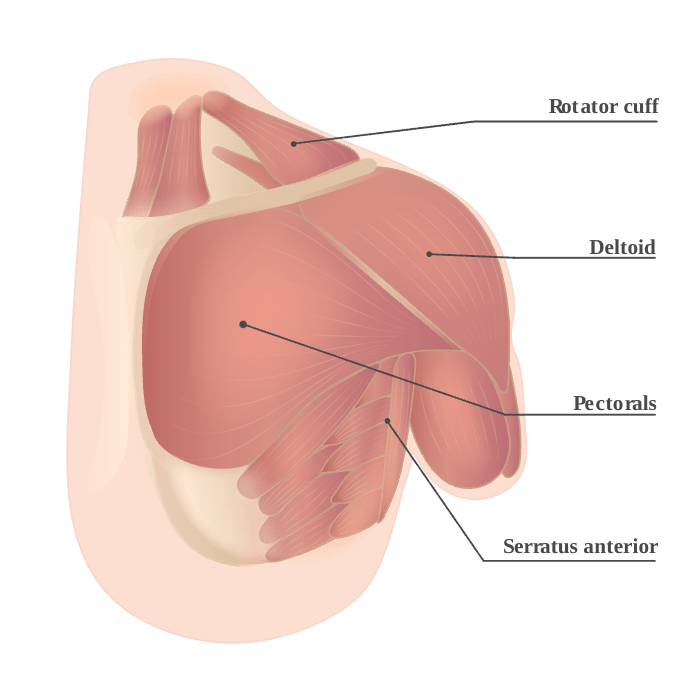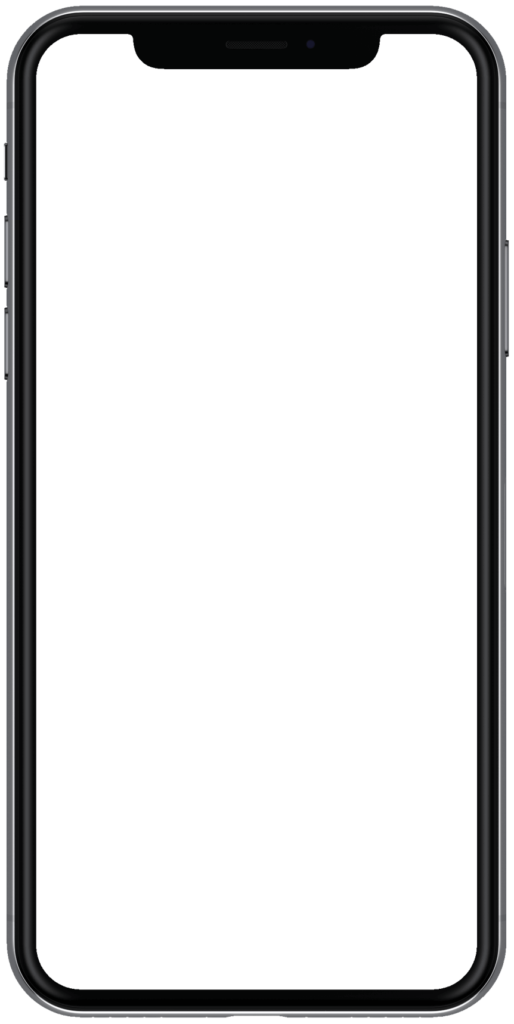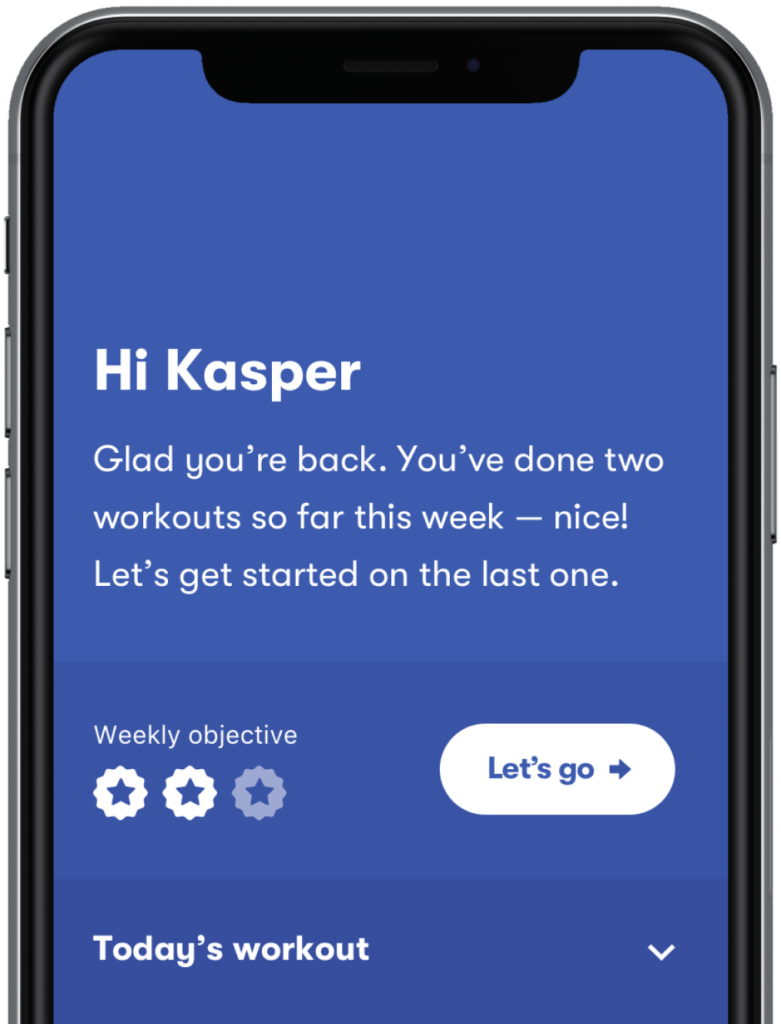Ever feel as though you’re carrying the weight of the world on your shoulders? Stress and tension often accumulate in the muscles of the shoulders and upper back. This can result in neck and shoulder pain and potentially headaches.
People often ignore the upper back during workouts. however it’s important that you don’t neglect this area. It plays an integral part in controlling your posture and core strength as well as movement. If it’s not working to its optimal function, poor lifting technique can cause you injuries and pain.
The upper back originates at the base of your neck, incorporates both shoulders and extends down to mid spine, including your ribs. The complexity of this region means that dysfunction can occur either due to injury or progressive pain and degeneration.
Content
- Why stretching and strengthening the upper back muscles is so important
- Anatomy of the upper back muscles
- What can go wrong
- Strengthening exercises for the upper back muscles
- Stretches for the upper back muscles
- Other techniques for managing upper back pain
Why stretching and strengthening the upper back muscles is so important
Your priority should be finding the balance of muscle length and strength. If muscles are too strong without adequate stretching, they can shorten and tighten. Less commonly, if they are too flexible without adequate stability, your joints can become too lax and you won’t be able to control your movement properly.
The muscles of the upper back are often overlooked during a workout for stronger, more impressive muscles that contribute more to your aesthetics. However, they are the cornerstone of the body’s posture and by ignoring them you are opening yourself up to injuries. By spending time working on the muscles of the upper back, you’ll find you’ll be able to lift more weight, with better muscle patterning and prevent unwanted injuries.
Anatomy of the upper back muscles
The neck consists of seven cervical vertebrae, the building blocks of the spine. Each block is separated by a disc that sits in between and each vertebra has a facet joint on either side. The seventh cervical vertebra, referred to as C7, meets the first of 12 thoracic vertebrae T1 at the base of the neck, a point known as the cervicothoracic (CT) junction. This can be a common source of pain as the spinal curves transition from lordotic (concave) to kyphotic (convex.) An increased kyphotic thoracic curve can result in you developing a prominent hunchback posture.

Each level of vertebra has a pair of nerve roots, one coming from each side of the spine. These nerve roots trail down to supply their corresponding portion on the arm. This is how referred pain can occur, if a nerve root is irritated or inflamed at the spine, symptoms can be felt in the corresponding region e.g. in the forearm or fingers. For instance, if you injure C7, you may feel pain in your index and middle fingers.
The shoulder blades, known as scapula, are responsible for the stability of the shoulder and forearm movement. They rotate, retract and protract and their movement patterning and stability can greatly affect your posture and arm function. If the muscles surrounding the shoulder blades aren’t functioning properly, you can end up with “scapula winging” where the shoulder blades stick out.
The muscles of the upper back and how they work:

- Trapezius (upper, middle, lower) – a diamond shape muscle divided into three sections. They are not designed to be heavy lifters but are often used inappropriately when incorrect lifting technique is used
- Rhomboids – connect the shoulder blades to the spine
- Erector spinae – these long, superficial muscles run down the length of your spine like train tracks on either side of the vertebral column. The erector spinae are not designed for heavy lifting or stability and are intended to extend the spine only however they can go into spasm during episodes of back pain
- Latissimus dorsi – the large wing-shaped muscles of the back that are one of the prime movers in shoulder function. These are the muscles that you use in exercises like pull ups and lat pull downs

- Rotator cuff – this group of four muscles (infraspinatus, supraspinatus, subscapularis and teres minor) provide stability around the shoulder joint. The ligaments of the shoulders are quite weak and lax compared to other parts of the body. This means they rely on the muscle strength of the rotator cuff for stability
- Deltoids – the muscles that provide the cap on the top of the shoulder. They are important in lifting actions as they initiate the movement of the arm coming up
- Pectorals (pec major and pec minor) these muscles sit across the front of the chest, however, have a large impact on the upper back. If the pecs are tight, they pull the shoulder joint forward resulting in hunched shoulders.
- Serratus anterior – wraps around the side of your rib cage on each side and acts to pull your shoulder blade forward
The upper back also includes 12 pairs of ribs, each that have muscles positioned between them, known as intercostal muscles. These muscles can become painful with excessive amounts of coughing or being out of breath for long periods of time.
What can go wrong
- One of the most common causes of upper back pain is muscle tension causing tightening of your upper traps and impingement of the nerve in the space above the shoulder blade (the suprascapular space.) Referred neck pain can occur due to compressed nerves that pass above the scapula and can also cause pain in the arm or numbness and pins and needles.
- You can also suffer from degeneration of the facet joints of the vertebra, closing down the space meaning there isn’t as much room for the nerve roots to pass and they can become compressed.
- Disc herniation can sometimes be referred to as a “slipped disc” however the disc doesn’t actually slip but bulges. This can cause compression or irritation of the exiting nerve root. Due to degeneration and drying out of the discs with age causing decreased height of the intervertebral disc, the nerve roots can be compressed even without a disc herniation.
- Posture is one of the biggest causes of upper back pain and weakness. Desk working and increased use of tech devices amongst the entire population is resulting in higher rates of poor posture and back and neck injuries. Anteriorly rotated shoulders can result in your external rotators becoming weak and tight pectorals and hunchback posture.



